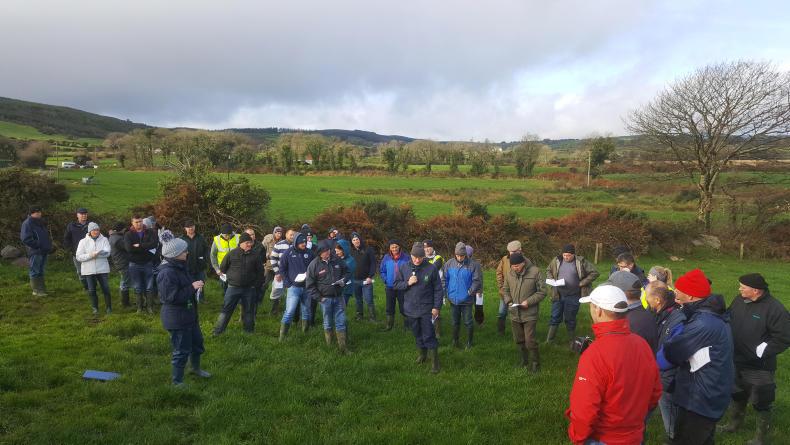Andrew Desmond of Rylane, Co Cork, is contract-rearing for the Murphy family from Carrigadrohid. The arrangement came about after the Murphys mentioned to their Teagasc adviser Seamus Lordan that they were considering having their heifers contract-reared.
Desmond mentioned that he was considering contract-rearing to his adviser Michael Bourke. Both parties met Austin Finn of the Land Mobility Service and worked out a suitable arrangement. Michael Murphy said: “We were talking about it for a year. First of all, we came up to look at the farm. It was obvious from the cattle that were here that Andrew was a good stock man and he had the facilities. Austin Finn was very helpful.”
One benefit for the drystock farmer is that they are guaranteed a monthly income. For a dairy farmer, their young dairy stock get priority treatment.
Regular communication and a written agreement are essentials for a successful contract-rearing partnership.
Communication is huge; there are a lot of decisions to be made from the time a heifer calf leaves the farm until she arrives back as an in-calf heifer.
You have to decide on stock numbers, when they arrive and leave and who pays for what. This can all be built into the price per day. One example from the Desmond/Murphy arrangement is that the Murphys pay for the vaccines and AI while Andrew pays for the dosing.
They agreed on a price of €1.20/head/day with Andrew paid on the first of every month.
Good communication isn’t just confined to farmers. Both parties should also contact their DVO to let them know you are working with another farmer.
Tom Curran of Teagasc urged farmers entering a contract-rearing arrangement to use the appropriate Department of Agriculture movement forms. The most common form is the 31B, or the bed and breakfast form.

Michael Murphy (with microphone), the dairy farmer in the contract rearing arrangement
If there is a TB outbreak and you have to make a welfare case to move animals back then having a copy of the form is useful.
A written agreement is essential in any partnership between two farmers.
Contract-rearing is an arrangement that needs to work and benefit both parties. It is also a good reference point in the event of a difference of opinion.
Breeding
Breeding is an area that concerns contract-rearers, especially those who may not have previous experience of heat detection.
In this case, the Murphys look after the breeding. Scratch cards are put on all the heifers at the beginning of the breeding season. AI is used for 10 days.
Michael said: “As the younger stock have higher genetic merit we like to get a straw into every heifer."
They are brought in daily for 10 days and any with marks on the scratch cards get AI.
"After a week, any that haven’t come in get an injection and they generally come in within three to four days. A team of bulls go in after that. Conceptions to AI have varied from 58% up to 70%.”
All stock are weighed throughout the year. The Murphys had been weighing for a number of years prior to contract-rearing and were in a position to show Andrew the expected weights.
If stock fail to meet the weight, both parties discuss how they could be brought back on track. Michael said: “The weighing scales takes arguments and opinions out of it.”
Andrew has experience of the dairy side and he said that this was of benefit to him. Up to the autumn 2014, he had 35 suckler cows running a calf-to-weanling system.
In spring 2015, he took in 94 calves and 72 yearlings from Michael Murphy. In 2017, he rears 118 calves (98 heifers and 20 bulls) and 92 yearlings, (75 heifers and 16 bulls) on 41.2ha.
The organic stocking rate for 2017 so far is 135kg of org N/ha. Andrew said that he now finds his workload to be more consistent compared with when he was calving cows and busier at peak times.
In the Murphy/Desmond contract-rearing arrangement there are no penalties or bonuses. Regular communication is key to the success of this partnership.
Contracting to expand: growing a business and family
Farmer Writes: from a non-farming background to milking 140 cows






 This is a subscriber-only article
This is a subscriber-only article






SHARING OPTIONS: